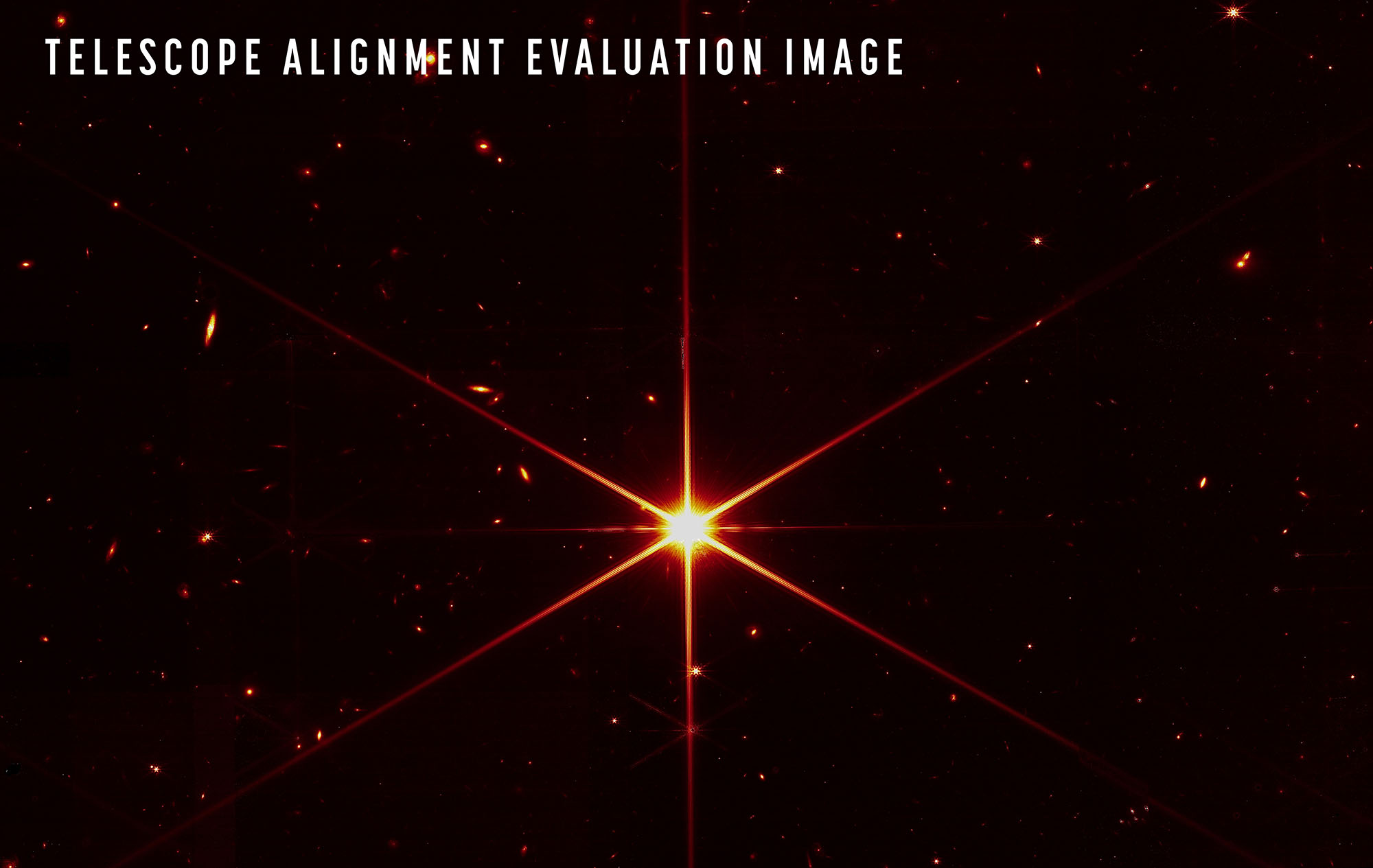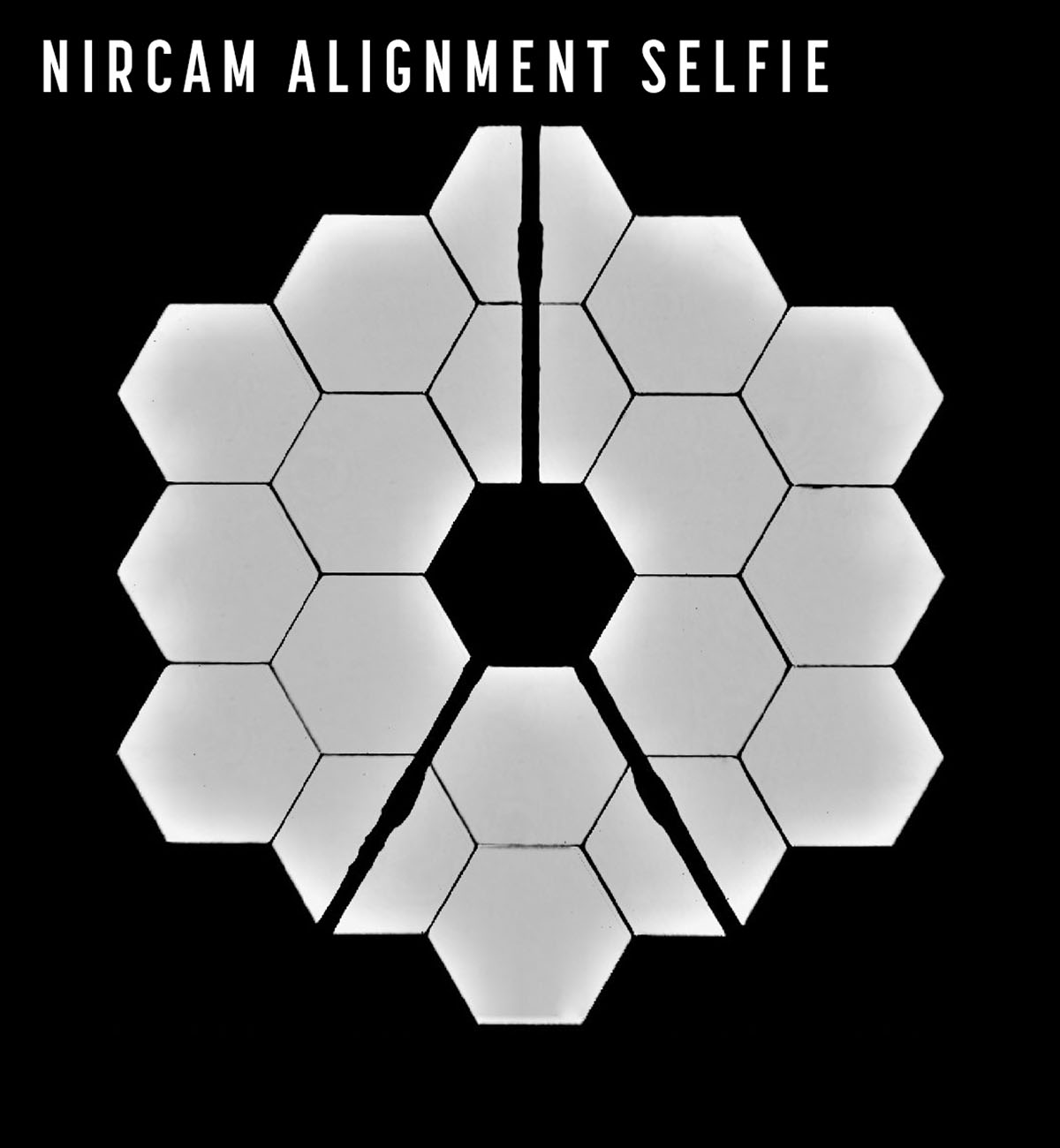Many Segments are now One Mirror

By now you may have seen photos of Webb’s iconic gold-plated mirror, comprised of 18 distinct Beryllium segments (see new selfie below). The telescope is not functional until all the segments work together as a single mirror. Now that each segment has been focused individually, the time has come for them to do just that.
Today NASA released the first image from Webb with all 18 segments focused and functioning together as a single 6.5-meter mirror. The image shows a single star focused in sharp detail, and in an unexpected bonus, a plethora of galaxies swirling in the distant background behind that star.
Matt Mountain, AURA President and Webb Telescope Scientist, said of the image, “This first aligned and phased image from Webb demonstrates the incredible capability of the telescope – look at all those galaxies, there is no “empty space” with the Webb, I can’t wait for the science to start!”
The Webb team working at Space Telescope Science Institute’s Mission Operations Center aligned the mirrors in stages of “coarse phasing” and “fine phasing.” The star’s spikes (a result of light diffracting around the edges of the mirrors and the support structure) appear just as predicted by modeling and confirm that the telescope is functioning exactly as planned. The spikes on the star are only evident because the imaged is “stretched” to reveal extremely faint light; the distant galaxies are also extremely faint and thus can be detected in this image.
This image was created using just one of Webb’s four instruments, NIRCam. The next step will be to adjust the mirrors so that the other three instruments are in focus as well. The first science images from Webb are expected in July.

